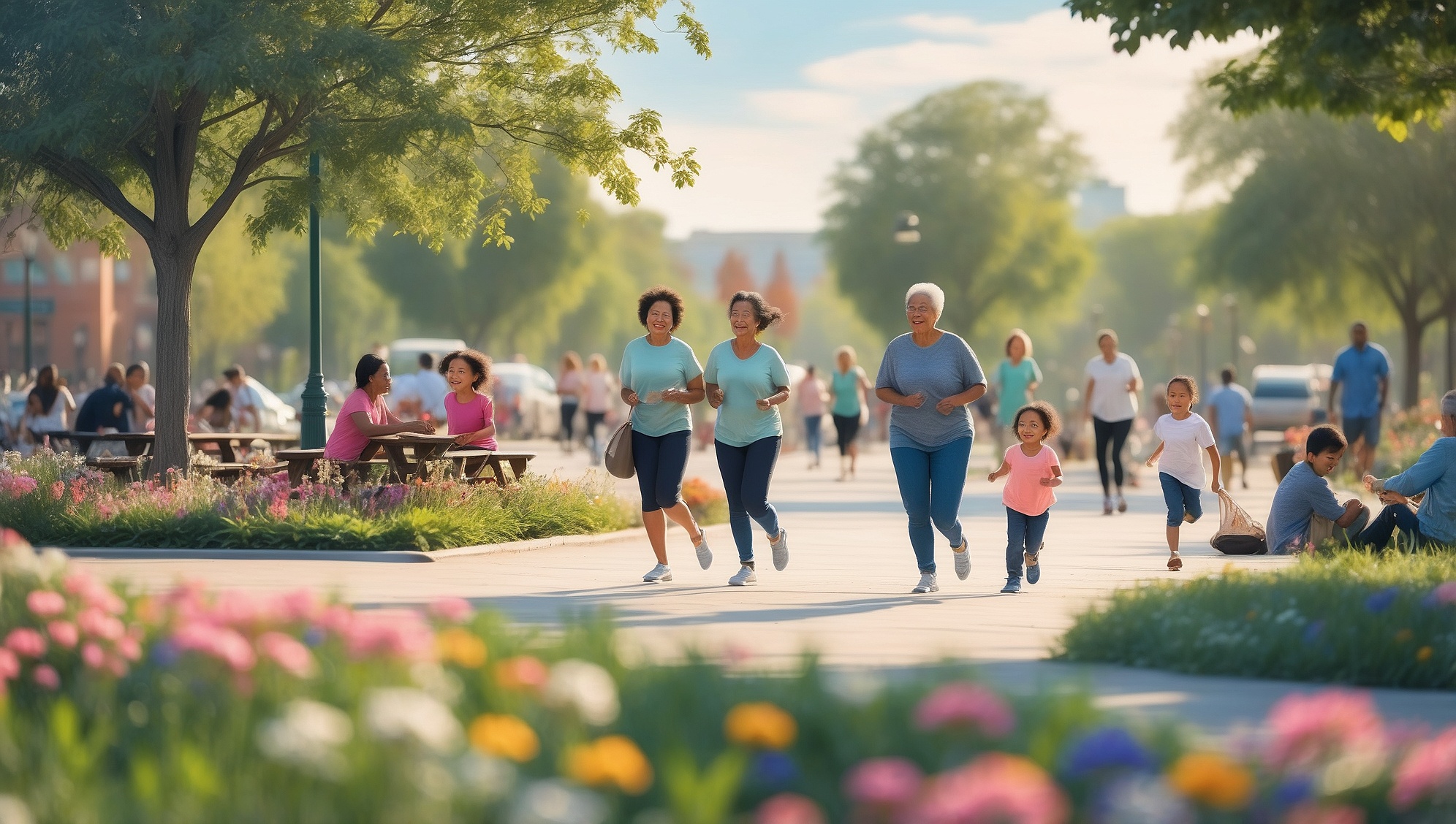Public parks and green spaces across Iowa’s Creative Corridor are doing more than beautifying neighborhoods—they’re strengthening community life by improving health, boosting local economies, and creating social connection points.
1. Physical Health and Mental Well-being
Parks provide a low-cost space for physical activity. Jogging trails, sports courts, and bike paths encourage movement. Daily exposure to nature has been linked to reduced stress, anxiety, and depression. People who spend time in green spaces often report better sleep and lower blood pressure.
Mental restoration doesn’t require a long hike or camping trip. Even a short walk under tree canopies or reading on a bench in a shaded park can lower cortisol levels. This accessibility helps people of all ages stay healthier without the need for gym memberships.
2. Social Bonds and Civic Engagement
Parks naturally bring people together. Community members gather for farmers markets, concerts, movie nights, and neighborhood meetings. These casual encounters build trust and familiarity.
Public spaces also encourage intergenerational interaction. Parents with strollers, teens playing basketball, and seniors walking their dogs all share the same space. These shared routines build a sense of neighborhood identity.
In cities like Cedar Rapids and Iowa City, public park projects have involved resident input from the beginning. This participation deepens civic pride and invites residents to take ownership of shared spaces.
3. Youth Development and Outdoor Learning
Kids need space to play, run, climb, and experiment. Parks provide this without screens or structured programs. Unstructured play builds creativity, problem-solving, and resilience.
Several green spaces in the Corridor now include interactive elements such as pollinator gardens, rainwater installations, and native plant signs. These act as living classrooms, connecting children with their environment. Local schools and after-school programs use parks for science and environmental learning.
4. Local Economies and Small Business Growth
Green spaces attract foot traffic. That traffic supports nearby cafés, food trucks, and small retail. Events held in parks increase visibility for local vendors and artisans.
Parks also raise property values. Homes near well-maintained green spaces often see a noticeable increase in market value. This added value boosts the local tax base, which can lead to reinvestment in public infrastructure.
5. Environmental Benefits with Community Impact
Green spaces manage stormwater, reduce heat, and improve air quality. Trees, grass, and native plants filter pollutants and offer shade that cools streets and sidewalks.
By integrating eco-friendly design, cities in the Corridor are addressing both climate challenges and quality of life. For example:
- Water-permeable trails reduce flooding.
- Native prairie gardens attract pollinators and require less maintenance.
- Tree-planting programs reduce urban heat and improve biodiversity.
6. Public Safety and Crime Prevention
Studies show that well-maintained parks contribute to lower crime rates. Increased foot traffic discourages illicit activity. Community events and passive surveillance—residents simply being present—create safer environments.
Programs like “Parks After Dark” in the Corridor provide evening events to keep parks active and welcoming during nighttime hours, further improving safety and visibility.
Public parks aren’t just green patches on a map. They are shared investments in community health, environmental care, and human connection. In Iowa’s Creative Corridor, they are a daily reminder that collective well-being starts just outside the front door.
